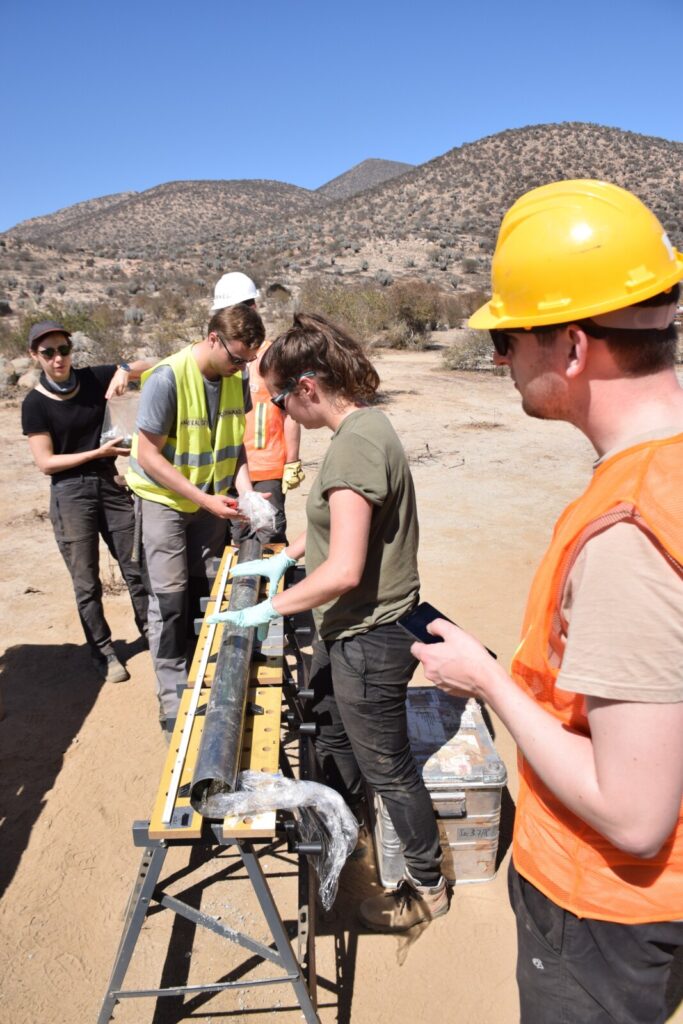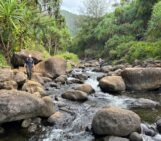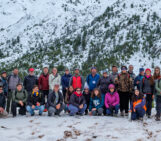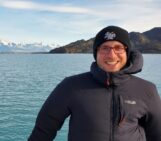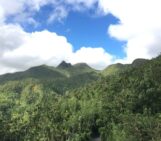
This blog post is part of our series: “Highlights” for which we’re accepting contributions! Please contact one of the GM blog editors, Emily (eb2043@cam.ac.uk) or Emma (elodes@asu.edu), if you’d like to contribute on this topic or others.
by Laura Krone, PostDoc in the Sedimentary Systems group at the Freie Universität Berlin (Germany).
Email: l.krone@fu-berlin.de
How is the deep subsurface connected with Earth’s surface?
In March of 2019, in the Coastal Cordillera in Chile, a diverse group of scientists dug a soil pit in a dry landscape when a sudden vibration occurred. Their first thought was that the heavy vibration was induced by the nearby drill truck. But then a smiling Chilean scientist explained to the group that they had just experienced a small earthquake.
This was my start to an adventurous and fantastic PhD journey in the Chilean coastal mountains. I was part of a diverse group that consisted of scientists from geology, mineralogy, geochemistry, biogeochemistry, microbiology, soil science, and geophysics. With this interdisciplinary team, we conducted four drilling campaigns along a climate gradient to study deep weathering and connections between the subsurface and the surface. Weathering is an essential geologic process that sustains life on Earth’s surface as the chemical breakdown of minerals consumes CO2 and releases plant essential mineral nutrients. But the onset of weathering is not well studied because it is hidden deep below Earth’s surface. The drill cores we obtained from Chile enabled an undisturbed view into the upper 100 m of the subsurface and allowed us to study particularly deep weathering.
My project focused on the geochemistry of the rocks, chemical weathering and determining the rates of surface processes. First, I analyzed the bulk geochemistry of the drill cores to derive weathering indicators like the chemical depletion fraction (CDF) and elemental mass losses (tau values). A major part of my project was applying the cosmogenic radionuclide meteoric 10-Beryllium for the determination of surface denudation rates, and also as a potential water infiltration tracer. Finally, with sequential extractions I investigated secondary weathering products in the drill cores.
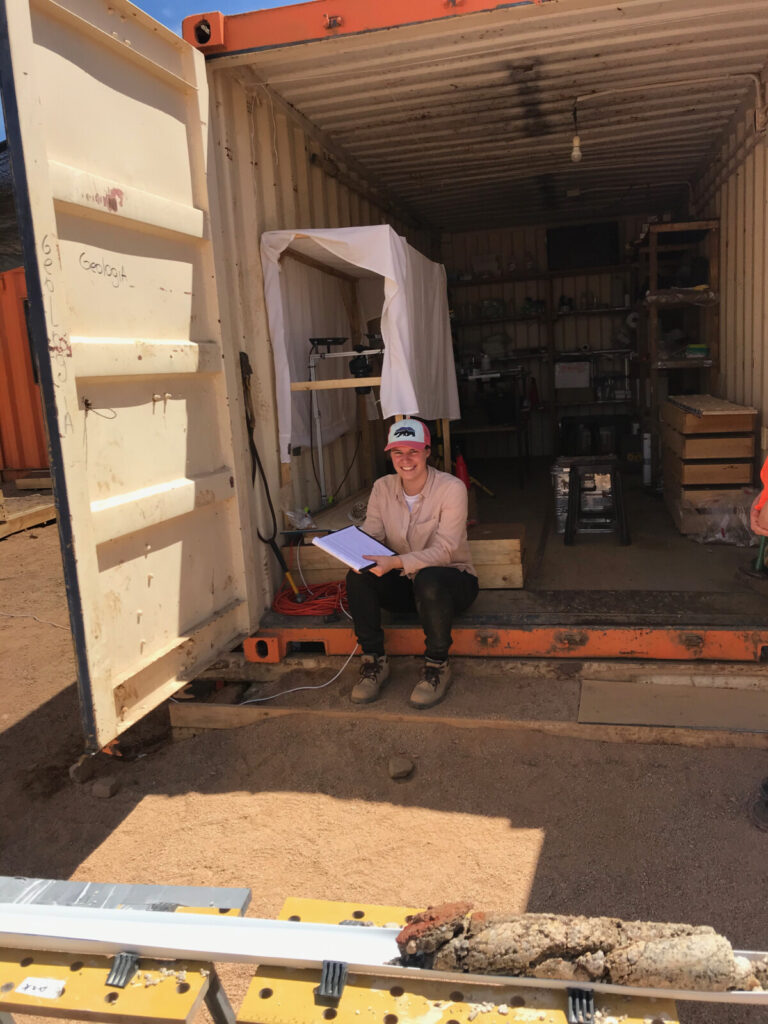
Laura Krone, in the makeshift field laboratory in Chile. In the foreground is a very weathered part of an extracted core from the deep subsurface.
The main outcomes from my studies are that deep weathering can develop even in dry climates and that meteoric 10Be can be used as a denudation rate meter when some prerequisites are known. We identified that the development of deep weathering depends on the preconditioning of the bedrock, including tectonic fracturing, hydrothermal overprinting, and groundwater or oxygen induced deep alteration. Tectonic fractures, also caused by earthquakes that happen often in this tectonically active region, serve as direct transport pathways for weathering reactants, like water, to depth. The overprinting or alteration prepares primary minerals for dissolution and precipitation of secondary minerals. In humid climates, however, the extensive formation of secondary weathering products inhibits deep weathering by clogging pores and thus reducing water infiltration pathways. Furthermore, the residence time of a weathering profile — thus the time that is available for weathering reactions to take place — is crucial for deep weathering. I determined this residence time using cosmogenic radionuclides and also tested if meteoric 10Be can be used as a tracer for deep water infiltration. The results from my study indicate that the secondary weathering products in the uppermost meter of the weathering profiles serve as efficient traps for meteoric 10Be and thus hinder deep infiltration.
Besides my own study and the outcomes, the interdisciplinary collaboration was a true highlight of the entire project. When using a drill core the observations and analyses are based on a single point in a landscape; however, In combination with the geophysics project, we were able to relate our observations to a bigger scale. The microbiologists investigated a much smaller scale and identified the different microbial species acting as weathering agents at depth. To study deep weathering and eventually how the subsurface determines the shape of the surface, several scientists from different fields are needed. To solve this riddle, the diverse group of scientists in Chile got help from a famous detective: Hercules Poirot. To learn more and see another highlight of my PhD, check out this movie about deep weathering!
***
Laura V. Krone is a geochemist and PostDoc in the Sedimentary Systems group at the Freie Universität Berlin (Germany). She did her Bachelor and Master in Sedimentology, Paleontology and Isotope Geochemistry at the Ruhr-Universität Bochum (Germany) and started her Doctoral studies at the Helmholtz Centre Potsdam GFZ German Research Centre for Geosciences (Germany) in March 2019. Laura was part of the Geochemistry of the Earth’s surface group und did her doctorate under the supervision of Friedhelm von Blanckenburg. Her doctoral project was embedded in the DFG-funded priority program “EarthShape – Earth surface shaping by biota” (DFG-SPP 1803).

